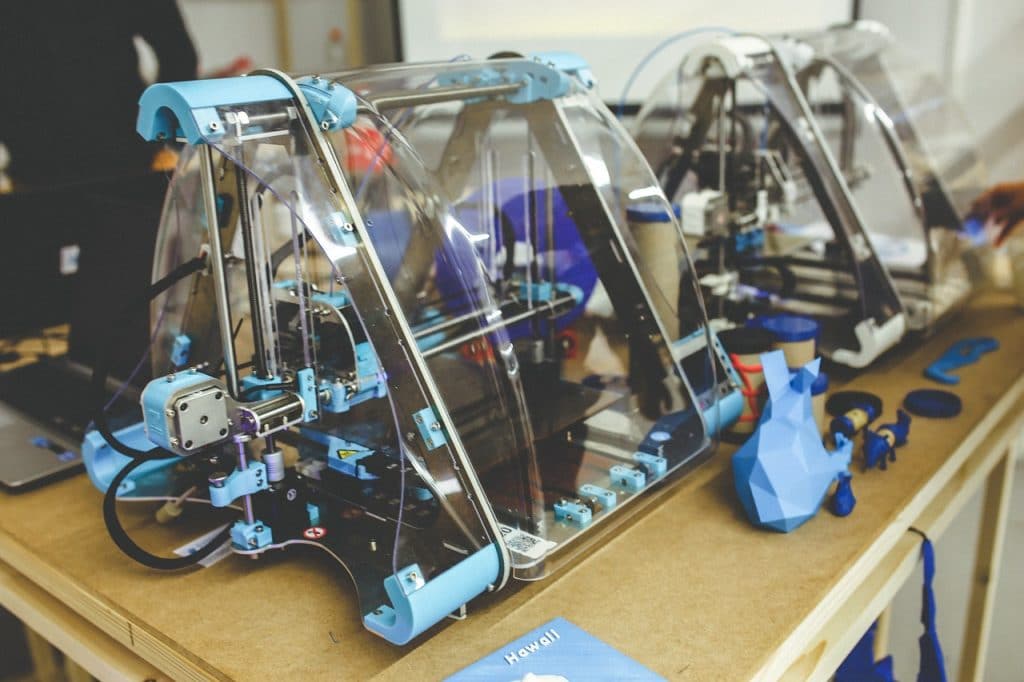Traditional printer provider HP has moved into the 3-D printing market in a big way over the past year, and its recent efforts to scale up its activity are now threatening industry leaders, Pacific Crest reports. HP’s planned moves include launching a global reseller program, expanding its open materials ecosystem and promoting its printing products in the Asia-Pacific market in partnership with China’s largest 3-D printing provider, 3DPrint.com says.
HP’s aggressive entry into the 3-D printing space signals how this printing has matured into a mainstream technology that plays an increasingly essential role in today’s enterprise. Advances in 3-D printing have made the technology more affordable and accessible for companies of all sizes, making small businesses more efficient and agile. Here’s a look at three ways 3-D printing advances in recent years are benefitting small businesses.
Lowering 3-D Printer Prices
At one time, 3-D printers cost tens or hundreds of thousands of dollars. Today, enterprise-quality 3-D printers are available for under $5,000 and even under $1,000. A recent CONTEXT survey found that sales of personal and desktop 3-D printers costing less than $5,000 grew 15 percent year-over-year in the first half of 2016. Growing volume of demand, increasing ability to develop and commercialize hardware technologies, and use of 3-D printers to produce required parts have all helped drive costs down. Moreover, as prices have been falling, additive manufacturers have been increasingly using desktop 3-D printers for not just for prototyping, but also tooling.
One company that’s been working to bring the prices of 3-D printers down for small businesses is Sinterit. Founded in 2014 by former Google employees, Sinterit has been able to bring the cost of selective laser sintering (SLS) desktop printers down from the $100,000 range to below $15,000. The Sinterit Lisa 3-D printer is supported by Autodesk’s popular Netfabb printing software for ease of use, so that users already familiar with Netfabb don’t need to learn additional software. The combination of the Sinterit Lisa with Autodesk Netfabb gives small businesses the ability to enjoy industrial grade optimization for the SLS printing process.
Increasing Outsourcing and Supplier Resources
While technology advances are enabling more companies to invest in their own 3-D printers, they’re also providing more resources for companies that prefer to outsource their 3-D printing needs or rely on suppliers for 3-D-printed parts. For example, Apple Rubber uses a MakerBot Replicator to offer over 7,000 options of customized o-ring sizes for applications such as medical seals and aerospace parts.
Startup Voodoo Manufacturing is seeking to increase the efficiency of outsourced 3-D printing services with its Project Skywalker, TCT Magazine says. The Skywalker system combines printing with a mass production assembly line approach where nine 3-D printers mounted to server racks are fed by a robotic arm that also collects completed products. Using this method, Voodoo Manufacturing aims to reduce production costs by 90 percent over a five-year period.
Enhancing Efficiency and Agility of 3-D Printing
Other 3-D printing advances are improving business efficiency and agility. One way this technology is helping business agility is by speeding up the prototyping process. For instance, Kraken Sensor needed a prototype of an underwater drone in time for an upcoming trade show. Realizing that conventional manufacturing could not complete the prototype in time, Kraken turned to 3-D printing company Axis Prototypes. Within two weeks, Kraken had its prototype.
📖 More similar articles
3-D printing is also boosting small business agility by streamlining logistics supply networks. UPS recently added 3-D printing services to its package delivery services after realizing that manufacturing customers who previously relied on UPS to store and ship parts might lose this business if companies started 3-D printing their own parts. To retain this business, UPS now uses its international network of locations to provide printing and shipping services. By enabling companies to 3-D print parts closer to their final destinations, UPS lowers shipping costs for companies and facilitates greater agility.





